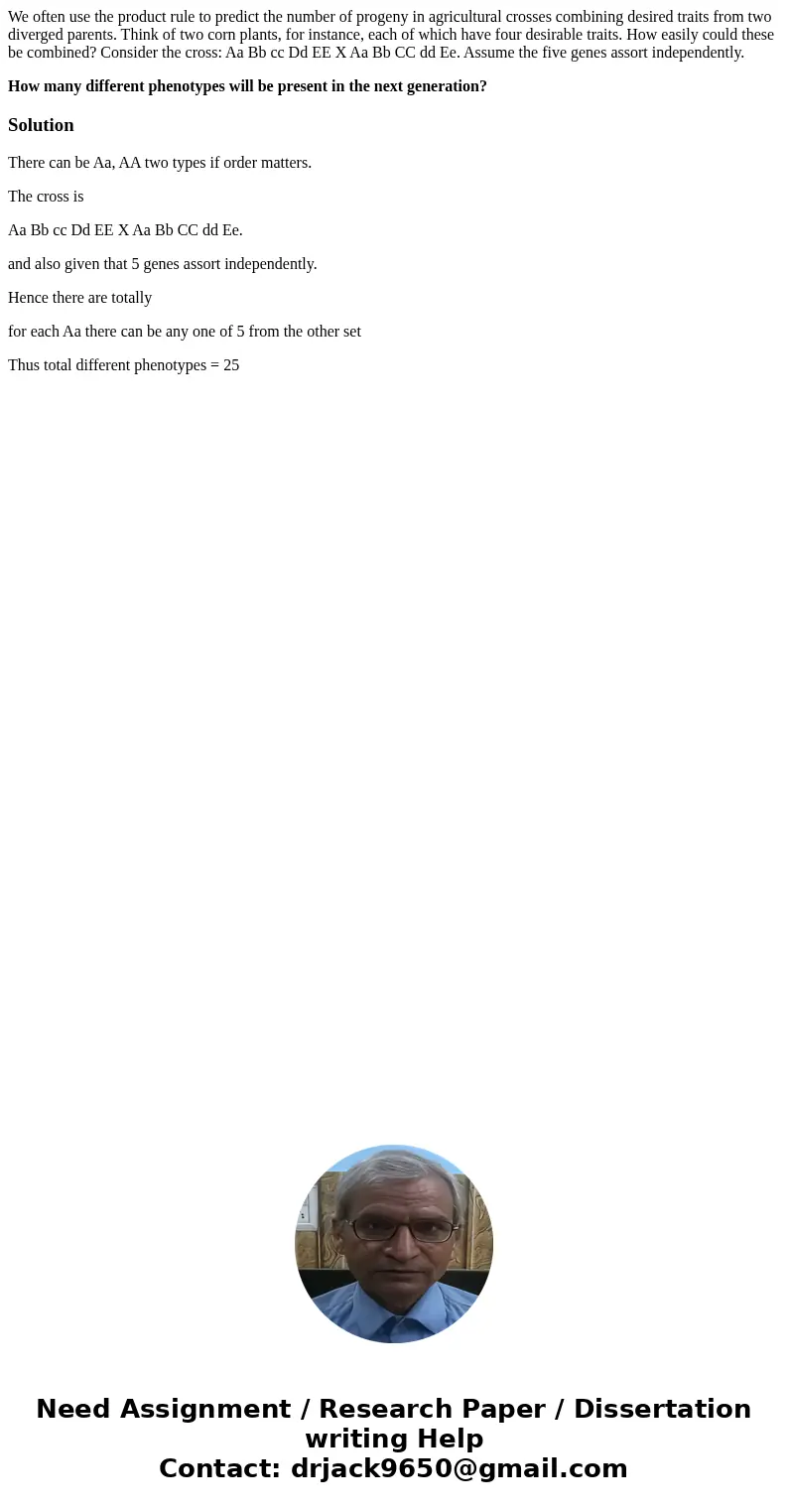We often use the product rule to predict the number of proge
We often use the product rule to predict the number of progeny in agricultural crosses combining desired traits from two diverged parents. Think of two corn plants, for instance, each of which have four desirable traits. How easily could these be combined? Consider the cross: Aa Bb cc Dd EE X Aa Bb CC dd Ee. Assume the five genes assort independently.
How many different phenotypes will be present in the next generation?
Solution
There can be Aa, AA two types if order matters.
The cross is
Aa Bb cc Dd EE X Aa Bb CC dd Ee.
and also given that 5 genes assort independently.
Hence there are totally
for each Aa there can be any one of 5 from the other set
Thus total different phenotypes = 25

 Homework Sourse
Homework Sourse